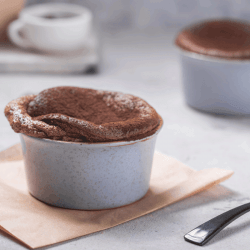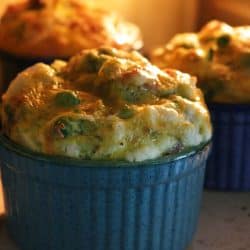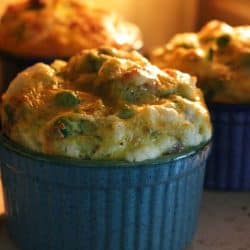Ramekins are a kitchen staple for any chef or baker. They're durable, versatile, and can be used at a multitude of skill levels. If you are thinking about using ramekins in your kitchen, you may be wondering- are ramekins non-stick? We're here to bring you the answer.
Typically, ramekins are not non-stick by nature. Luckily, ramekins can easily be made into a non-stick baking surface in a number of ways. Simply use one of these three products:
- Shortening
- Cooking oil spray
- Butter
To find out how to turn ramekins into a non-stick baking essential, continue reading. This article will also discuss what ramekins are made of, if muffin tins or glass bowls are a suitable substitute, and what other vessel you could use to make the beloved dessert crème brûlée. We will also touch on how you can use ramekins and provide links to some delicious ramekin recipes.

What Are Ramekins Made Of?
First, we need to establish what ramekins are made out of. Traditional ramekins are made of white ceramic. They are a small, round dish with a slightly lipped edge and beveled details lining the side.

While ramekins are known for baking desserts, they are actually an extremely useful tool for baking or cooking. Aside from putting them directly in the oven for cooking, they can be used simply as petite serving dishes, offering just the right amount of a sweet treat post-dinner. They are versatile and easy to use, making them essential for pros and novices alike.
Click here to view traditional, round ramekins on Amazon.
If you want a more colorful option, check these ones out:
Click here for colorful ramekins with scalloped edges on Amazon.
How Do You Make Ramekins Non-Stick?
While ramekins aren't usually non-stick on their own, it's very easy to make them non-stick. There are also a few different methods on how to do so: shortening, cooking oil spray, or butter.
Perhaps the easiest way of these three is cooking spray. Any cooking oil spray will help your food not stick to your ramekin. Examples include coconut oil, canola oil, and olive oil. All of which are available in spray bottles at your local grocery store. Pam spray will also suffice as a way to make your ramekins non-stick.
Another method is to use butter or shortening. All of these methods are easy and the one you choose is up to personal preference and what you have on hand. You may also choose your method based on what you're making. For a sweeter dessert, you may opt for coconut oil or butter, while a richer dish may call for an olive oil lining.
How to make a ramekin non-stick with cooking spray
Pick your cooking oil spray of choice and simply apply a thin layer to the inside of the ramekin and proceed with your recipe as instructed. Keep in mind that you do not want to overuse the spray as you'll run the risk of your creation tasting like the cooking oil.
How to make a ramekin non-stick with butter or shortening
Slice a sliver of butter, hold it in your fingers or drag it along the inside of your ramekin. Be sure to get a thin layer on all parts of the inside of the dish. For shortening, use a spatula covered in shortening and line the dish.
What Can Be Used Besides Ramekins?
There are a few other options if you would rather not use ramekins. If you want a truly non-stick option without any added effort, you can use a non-stick muffin tin. You can also use glass bowls but only if those bowls are oven safe. Keep reading for further clarification and why you may still want to opt in favor of ramekins.
Can You Use Glass Bowls Instead of Ramekins?
Most glassware products from brands like Pyrex and Corningware were designed to withstand the heat of an oven. However, not all glassware is created equal. If you do choose to use glass bowls instead of ramekins, you could run the risk of your bowl shattering into hundreds of pieces inside the oven if that bowl is not oven-safe.
To err on the side of caution, please read up on the dish you are using and what the safe temperatures of use are before baking. These details can typically be found in the product description listed for the item if purchased online or on the box of the item itself if purchased in a store.
If you do have oven-safe glass bowls, you can follow the same instructions above as to how to make them non-stick.
Can You Use a Muffin Tin Instead of Ramekins?
Another viable option in lieu of ramekins is a muffin tin. An advantage of using a muffin tin over a ramekin is that you can buy truly non-stick muffin tins which allow the user to bake and cook as they please without the additional step of making the dish non-stick by way of butter or oil.
However, it is important to note that when you make individual servings in a muffin tin, you have to remove the item from the tin before serving. When using a ramekin, you can serve the person their dish directly.
How to Decide Between Glass Bowls and Ramekins?
In short, you may want to opt out of using glass bowls or a muffin tin as a replacement for ramekins, especially if you are planning to put your dish in the oven or serve it straight from the oven.
A lot of times when ramekins are used, it is because multiple single-serving portions are made of the same dish or dessert. The dish can go right from the oven to their individual setting at the table. This is not an option if you use a muffin tin and also not an option if your glass bowls are not oven-safe.
If you want your presentation to be uniform and in a perfect serving size, ramekins are the right choice for you. An example of this would be serving individual chocolate molten lava cakes for a dinner party, the recipe for which can be found here.
Can Crème Brûlée Be Made Without a Ramekin?
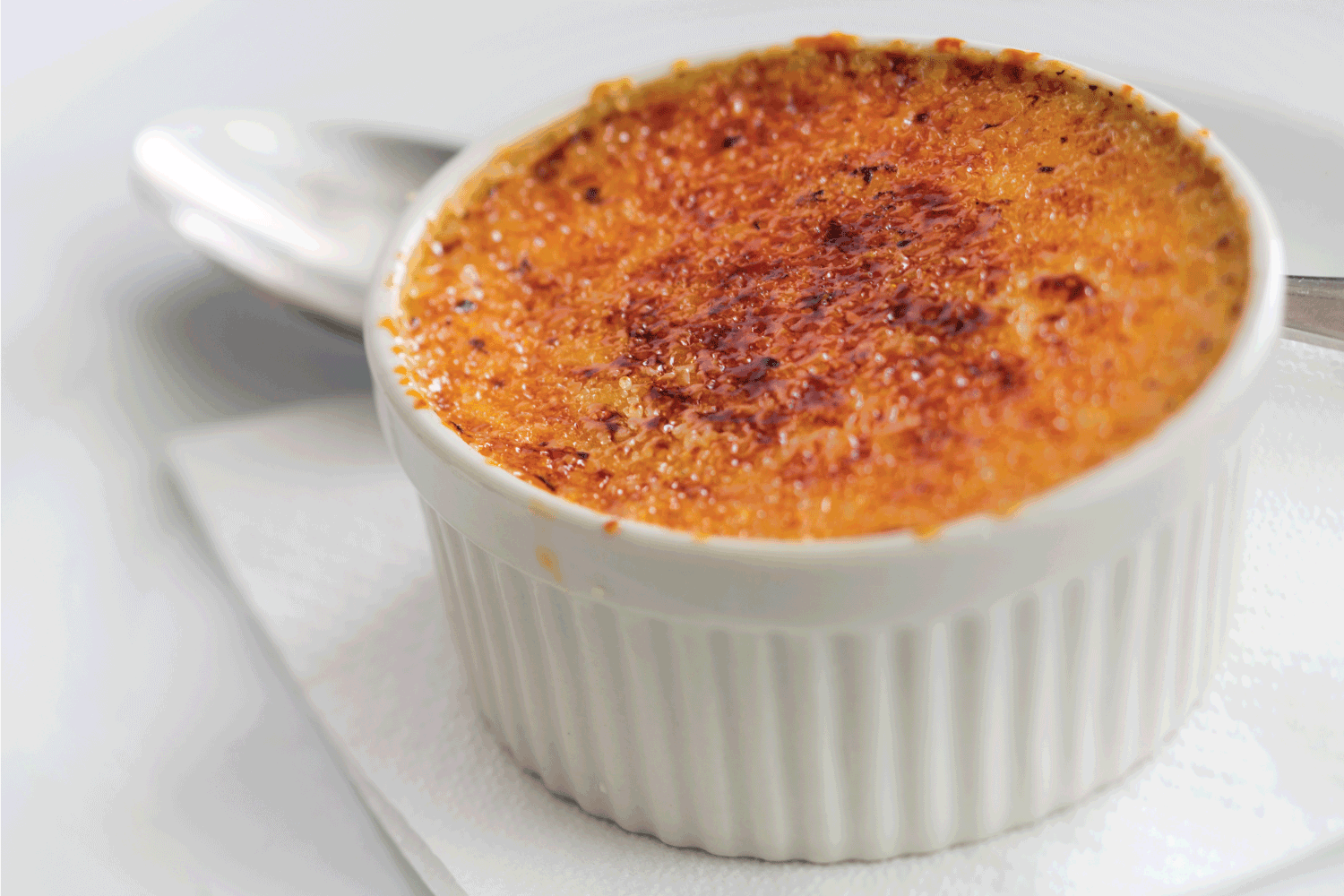
One of the most popular recipes made inside a ramekin is crème brûlée. If you don't have ramekins on hand, you may be wondering if there are any substitutes. Luckily, there are a few different ways to make a delicious crème brûlée sans ramekin. Crème brûlée can actually be made in glass bowls or jars. Izzy Cooking provides a step-by-step recipe on sous vides crème brûlée that can be made in mason jars- check on the recipe here.
What Can you Make with Ramekins and When Should You Use Them?
As stated before, ramekins are versatile because they can be used to make appetizers, entrees, and desserts. They can also be used at all skill levels of baking and cooking. If you've got your hands on a set of ramekins and are wondering what to do with them now and when to use them, look no further.
Ramekins are ideal when you are looking to make individual desserts or portions. Each person will get their own cute little dish with a treat that's just for them. Ramekins are great for gatherings or dinner parties for that reason and also because you can use them for baking or just for serving purposes- i.e ice cream in a ramekin topped with a mint leaf or a few berries for a fancy finishing touch.
Savory recipes
Individual Chicken Pot Pies
Loaded Baked Potato Casserole
Sweet Recipe Options
Peach Cobbler
Single Serving Monkey Bread
Tangy Lemon Pudding Cake
In Closing
Ramekins are a kitchen staple that can easily be made non-stick in a number of ways, the easiest being by use of either cooking spray or butter. Overall, ramekins are inexpensive, well made, come in a pack, and take up very little storage space. While there are substitutes for ramekins out there, having a set on hand could really come in handy. When you factor in the flexibility of being able to use them for appetizers, entrees, or desserts, there's really no reason to not have them!
To learn more about ramekins, check out these related articles:
Do Ramekins Come in Different Sizes?
Can You Cook Eggs In a Ramekin?



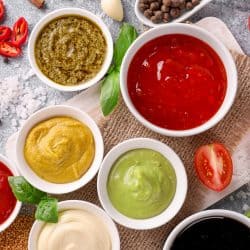
![Two ramekin with chak chak on a white table, What Is A Ramekin? [Pictures, Shopping Guide & Alternatives]](https://kitchenseer.com/wp-content/uploads/2020/05/Two-ramekin-with-chak-chak-on-a-white-table-250x250.jpg)
